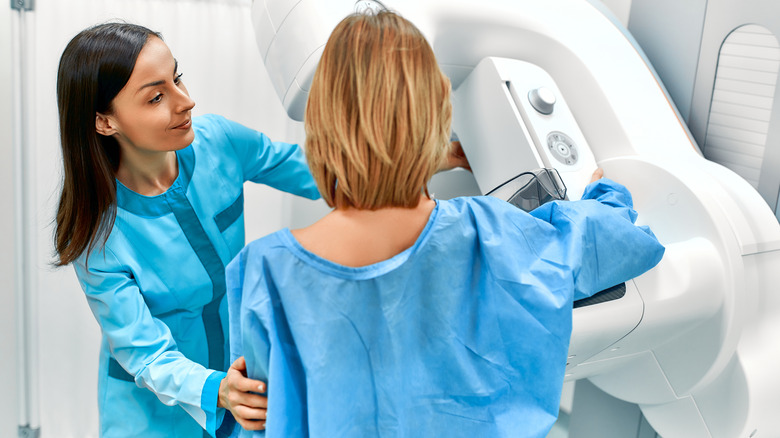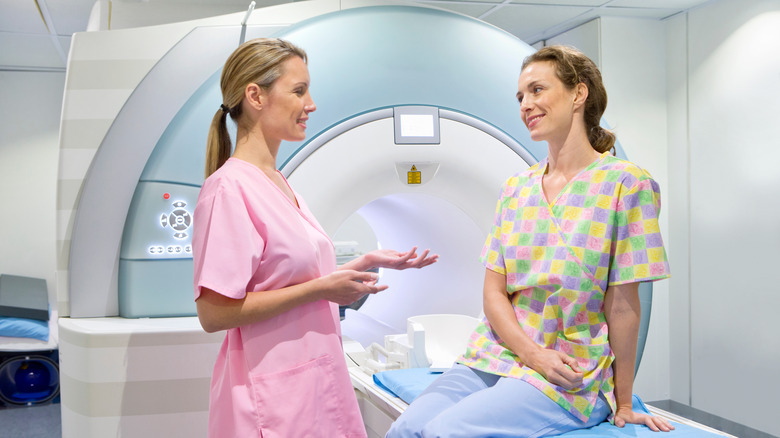Mammogram Versus Breast MRI: What's The Difference?
The U.S. Centers for Disease Control and Prevention (CDC) states that a mammogram is an X-ray image of the breast. When you get a mammogram, your breast will be placed between two plates, one below and one above. The plates will firmly press on your breast, flattening it, while an X-ray is taken. This is then repeated from the sides of the breast.
On the other hand, the American Cancer Society (ACS) explains, a breast MRI uses radio waves and strong magnets to create a picture of the inside of your breast. Prior to the MRI, you will have an IV placed in your arm so that contrast material can be injected. This helps with the detection of any abnormalities in your breasts. You will then lie face down on a table with your arms above your head and your breasts hanging down in an opening on the table. After you have done this, the table slides into a long, narrow tube where the imaging will be done.
Both are types of imaging that can be used to screen for breast cancer; however, Verywell Health notes that they may each play a different role in the screening process due to their individual strengths and weaknesses.
Should you get a mammogram or a breast MRI?
According to Dr. Svati Long at Raleigh Radiology, neither type of imaging is necessarily better. Instead, they work together when necessary to give your radiologist a more complete picture.
The CDC states that mammograms are the best tool for catching breast cancer early. Regular screenings can allow doctors to catch it up to three years before a lump can be felt.
However, when it comes to more dense breasts, an MRI may be recommended. Verywell Health writes that, with dense breasts, the sensitivity of the mammogram — its ability to detect disease — can decrease by up to 64%. A breast MRI can provide much higher sensitivity in these women, ranging from 81 to 100%.
Although breast MRIs have a high degree of sensitivity and can pick up on things that a mammogram might miss, they are rarely used as a standalone procedure. The ACS writes that they are more prone to false positives. This means that women could receive unnecessary biopsies. In addition, MRIs can sometimes miss cancers that would have been found with a mammogram. For these reasons, mammograms are the preferred tool, and when MRIs are used (typically if a woman is at high risk of breast cancer), the ACS also recommends a mammogram.
Verywell Health notes that cost is also a consideration; MRIs tend to cost much more. Many insurance companies will not pay for an MRI unless an abnormality has already been spotted.


